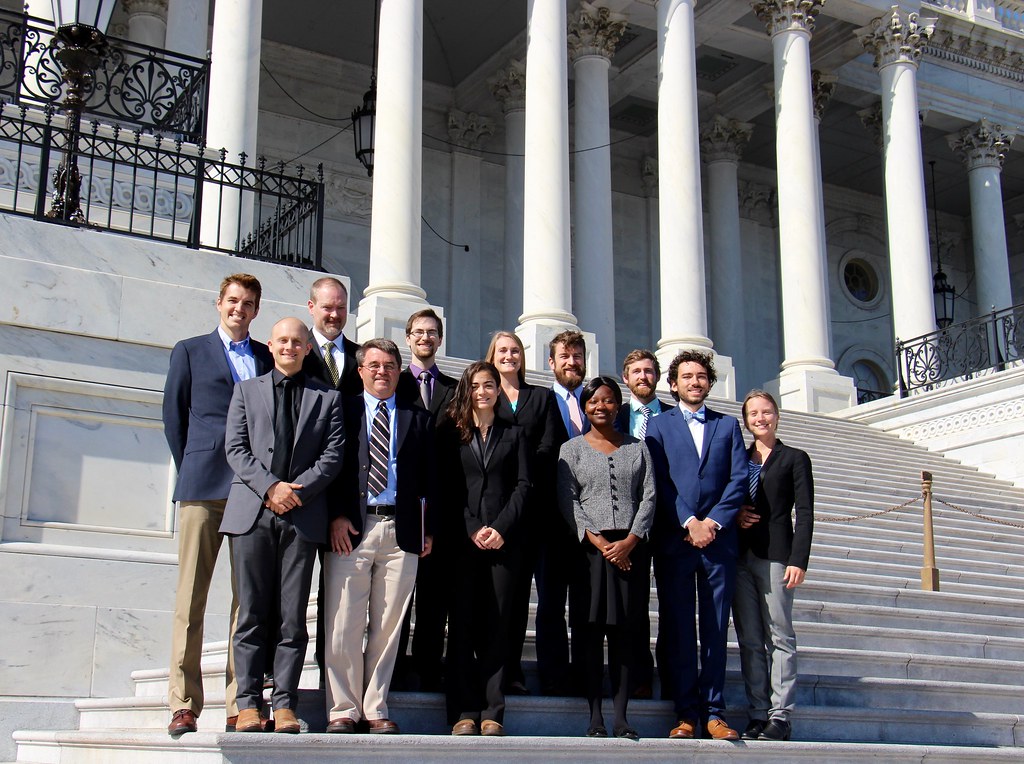From VT News
When most Americans think of New Zealand, images of sprawling fantasy landscapes may come to mind; however for Brian Strahm, associate professor of forest soils and biogeochemistry in the College of Natural Resources and Environment, it’s all about trees.
Strahm was named a Research Fellow of the Organisation for Economic Co-Operation and Development through its Co-operative Research Program for Biological Resource Management for Sustainable Agriculture Systems. The organization is an international body of 35 countries designed to promote economic growth, prosperity, and sustainable development across the globe.
As a Research Fellow, Strahm spent the first six months of 2017 in New Zealand partnering with scientists from Scion, the New Zealand Crown Research Institute for forestry. Together they worked to develop ways to improve forest productivity without negative environmental impacts.
“Over the last few decades, New Zealand has seen massive changes in land use, from forests to agriculture and other efforts,” Strahm explained. “There have been some environmental impacts associated with that shift, especially in terms of water quality. Not only is it a problem for communities there, it could put a black mark on the clean and green reputation New Zealand has worldwide.
“Forest products are New Zealand’s third leading export, and they want to double the nation’s forestry productivity over the next decade,” he continued. “To do so, they’re looking into nutrient management, but a lot of people are worried about potential water quality problems that might result from it.”
Nitrogen is required for plant and tree growth, and higher levels of nitrogen can help trees reach their maximum biological potential. Too much nitrogen leaking in rivers and lakes, however, can lead to eutrophication, a process that induces the growth of aquatic plants and algae, and can ultimately lead to oxygen depletion in the water.
“We’ve been working to figure out how to add nutrients like nitrogen and achieve the maximum benefit with minimal environmental impacts,” added Strahm, who is affiliated with the Global Change Center, housed in Virginia Tech’s Fralin Life Science Institute.
To explore options for fertilizing forests without harming surrounding waterways, Strahm and the scientists from Scion developed large-scale field trials to determine the fate of applied nitrogen.
The researchers partnered with forest industry professionals to find middle-aged forests to fertilize. Then, they placed small resins in the ground that could trap nitrogen moving past them in soil water. With this method, the researchers can determine how well the trees are growing and how much nitrogen is making its way into surface and ground waters.
“We have about 10 treatment plots across New Zealand’s North Island, where we’ll gather data over the next few years,” Strahm said. “We’re also looking at foliage and soil samples from historical trials where they already know if there was an increase in productivity and analyzing them for nitrogen stable isotopes now.”
“These forests are nitrogen limited, and we believe that lack of nitrogen is preventing them from growing to their potential,” he continued. “If we add nitrogen, we hypothesize that it will cause the forests to increase in biomass without too much nitrogen draining into the groundwater. We believe that the use of nitrogen stable isotopes will help us strike that balance.”
Strahm will continue to receive and analyze samples from the treatment plots at his lab at Virginia Tech’s Department of Forest Resources and Environmental Conservation for the next several years. These samples will provide an understanding of nitrogen cycling nationwide that can be a resource in land-use planning. He hopes that this project can be the start of a collaborative effort that can go on for decades.
“The data we’re getting back now will help us design future trials, and as we look at that data, we’ll be able to design even more trials based on that data. We’ll keep refining and trying to put the best information we can into the hands of decision makers, whether they’re government officials or land managers,” he said.
Strahm gave the keynote address at New Zealand’s Growing Confidence in Forestry’s Future conference before heading home to Virginia. The conference is part of a national program that brings together government representatives, forest industry professionals, scientists, and representatives from New Zealand’s Maori people who are working together to find ways to improve productivity in forests within the limits of environmental sustainability.
“I was able to provide conference attendees with a visioning talk and highlight opportunities I see for them as a nation and as an industry. I discussed what’s going on in forest fertilization in the United States, highlighted current research, and offered recommendations for what they might be able to do,” Strahm said.
“This was a fantastic experience,” he added. “I got to work with an incredibly welcoming community of scientists, and I saw the similarities and differences between their systems and ours. I think there will be a lot of opportunities for cross collaboration in the future.”
Strahm earned his bachelor’s degree in biology from the University of North Carolina at Chapel Hill and his doctorate in forest resources from the University of Washington.
[hr]
Story by Heidi Ketler



